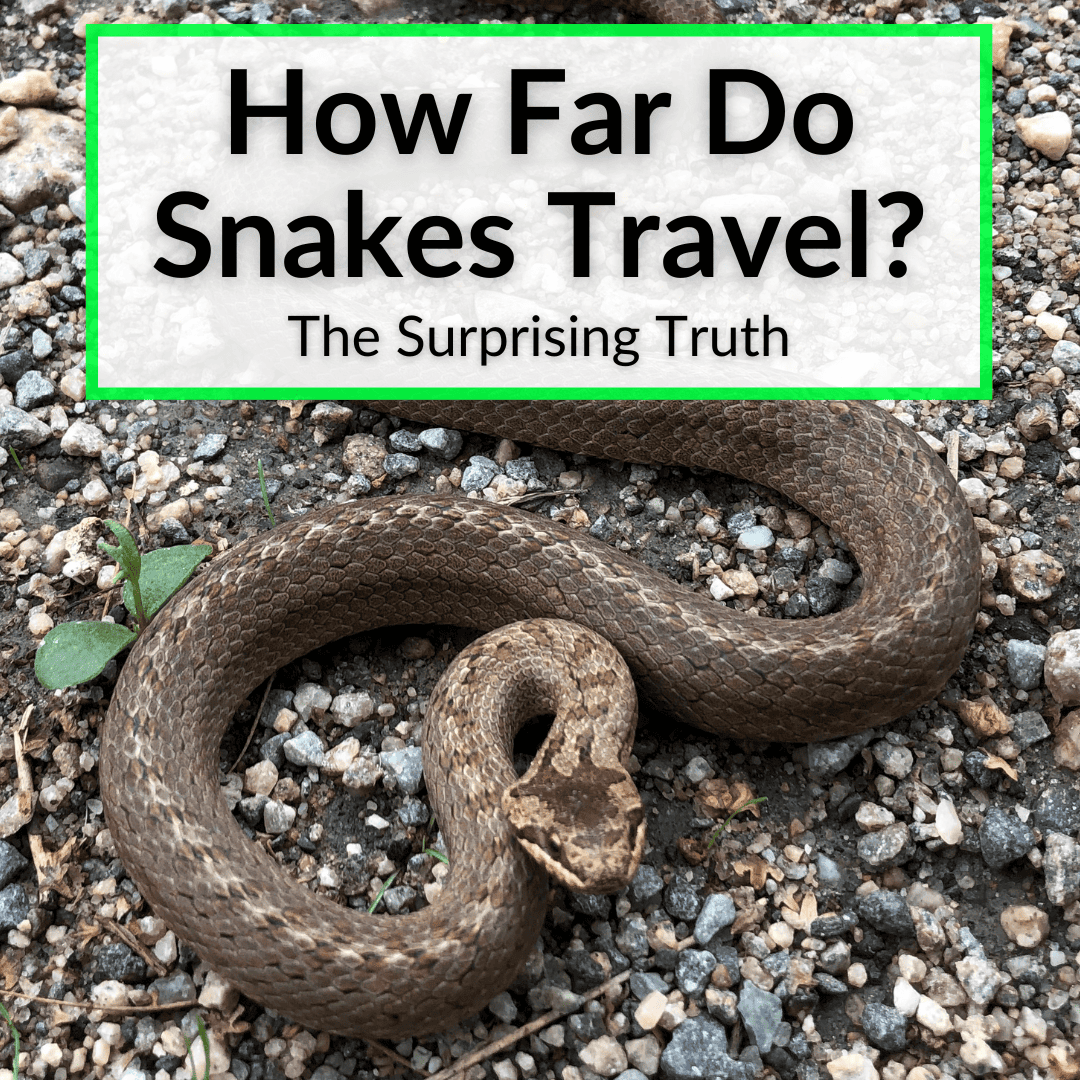
But they are also cold-blooded.
And they do not eat very often.
This means they need to conserve energy as much as possible.
What does this mean for their mobility? How far do snakes travel, in general?
It turns out some travel incredibly far. But most do shockingly little traveling.
Keep reading to learn everything you need to know about the distances different snakes travel during a day, and throughout their lives.
Table of Contents
- 1 How Far Do Snakes Travel?
- 2 How Far Can A Python Travel?
- 3 How Far Do Rattlesnakes Travel?
- 4 Distances Snakes Travel: Final Thoughts
How Far Do Snakes Travel?
Most snakes do not travel far. They stay within a 1 to 2 mile (3 to 5 km) range all their lives. However, some snake species are known to travel a sizeable distance in search of a mate, food, or protective shelter.
The distance a snake travels depends on various factors, including the snake’s type, the season, and the availability of food, shelter, and mates. Most snakes prefer staying in their range, because it helps them conserve energy, which is important for these cold-blooded animals.
Do Snakes Travel Around?
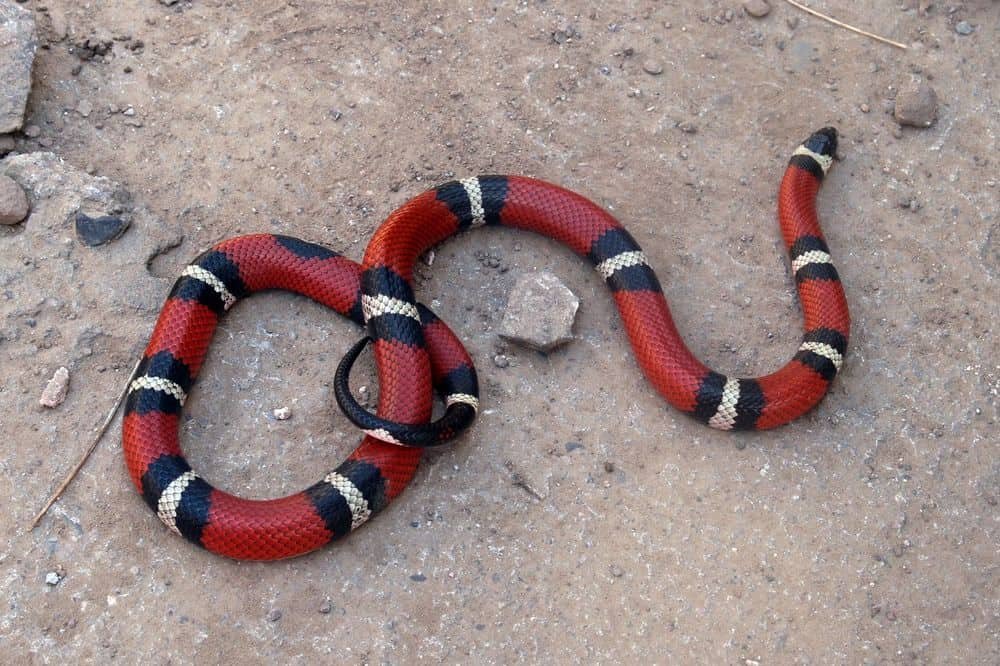
Yes, snakes do travel around if the need arises. They can move fairly easily, despite the fact that they do not have legs. Most snakes use a gliding movement to move across the ground and some species can even climb trees.
Arboreal or semi-arboreal snake species can even throw themselves through the air to move from tree to tree. Almost all snakes can swim.
If a snake finds all that it requires in its range, it won’t travel around too much. At the most, it might move 3 to 5 km (1 to 2 miles) in a loop. Scientists consider even this small distance as a relatively lengthy migration for snakes.
Why Do Snakes Need To Travel?
Snakes usually travel in search of mates, food, moisture, basking spots, or shelter. Let’s take a closer look at the different reasons snakes may have for traveling.
In Search Of Food
Mice, which are the preferred food for most snakes, leave a scent trail that snakes can sniff out. Pythons, who are ambush predators, lay waiting on those trails to pounce upon their unsuspecting prey.
Water python species like the Liasis Fuscus are known to travel more than seven miles, following behind their favorite food, the dusky rats. those rats migrate to higher areas in wet seasons, so the snakes have no choice but to follow along.
For Warmth During Winter Brumation
Most snakes are solitary, but they tend to seek out caves and crevices occupied by other snakes in winter to brumate together. Brumation is similar to hibernation, but the animal, does not actually sleep the entire time.
For Mating
Male snakes travel long distances to find healthy females to mate with. Female snakes usually stick to their range during the mating season.
To Give Birth Or Lay Eggs
A pregnant female snake might travel in search of a secluded, dark, and warm area to lay eggs or give birth. It depends on the species, with some giving birth to live snakes, others laying eggs, and other hatching eggs inside their bodies.
For Basking Areas
Snakes love to bask and some species might travel a few miles in their range in search of a good basking spot.
For Moisture
Water-loving snakes tend to move to wet areas during the dry season.
How Do Snakes Travel Around?
Snakes have long backbones that enable them to use wavy, S-shaped, or rippling movements to move across the ground. They use their scales to grip the ground and their belly muscles to push and move forward.
Here are four ways in which snakes can travel around:
- S-shape movement: the snake wriggles from side to side
- Sidewinding movement: the snake keeps its head and tail on the ground while throwing the middle part of its body forward
- Concertina movement: it pulls one half of its body in one direction first and then the other
- Caterpillar movement: as the name indicates, the snake moves just like a caterpillar; it will use its belly muscles to propel itself forward
Interesting Facts About Snake Movements
- Very few species of snakes can slither backward. Some sea snakes have been known to move or crawl backward when threatened.
- Snakes cannot move easily on smooth surfaces like glass or marble, since these surfaces offer no irregularities for their belly scales to grip.
Do Snakes Stay Around In The Same Area?
Most snake species prefer staying in their range or in the same area. After all, snakes are cold-blooded animals and longer migrations do not suit them in terms of energy expenditure.
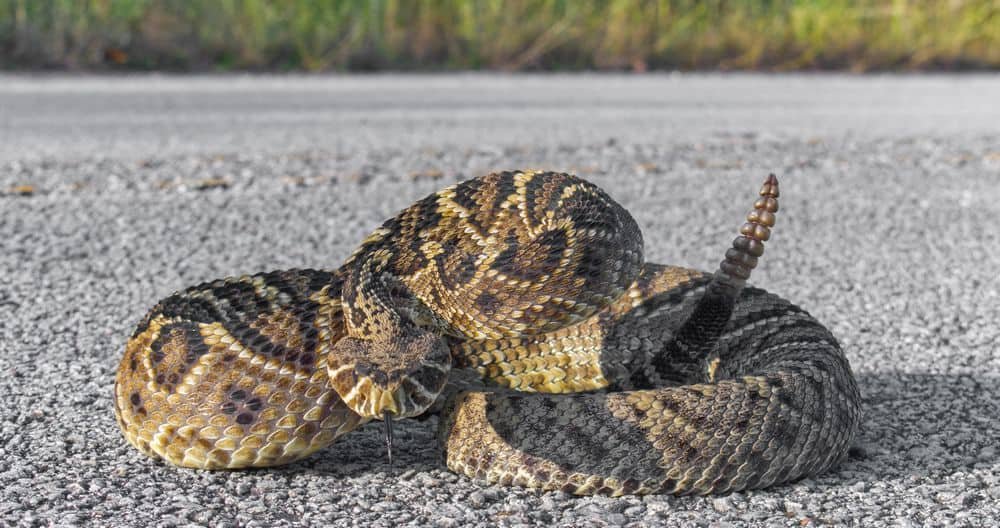
An exception is when they have to go in search of food, shelter, or a mate. In rare cases, they may move around to avoid competition and predators.
Sea snakes have longer migrations than land snakes because they are aided by strong ocean currents and do not have to power their way through the water. The yellow-bellied sea snake, for example, is estimated to travel almost 20,000 miles over a period of 10 years!
More studies are needed to understand snake migrations. The few studies that have been conducted by tagging snakes tend to show that most terrestrial snake species stay in the same general area in which they were tagged.
How Long Can Snakes Stay In One Place?
According to experts at the University of Melbourne, some python species can stay in one place for several weeks or even months. They do not need too much food and will gladly wait for their prey to walk past them.
The African Rock python, for example, can subsist on a large meal for nearly 2 years and won’t move around much, unless absolutely necessary.
On the other hand, some active snakes need to hunt regularly and they may move around daily in search of food.
Younger snakes need more calories and tend to actively hunt daily. Similarly, snakes with longer, thinner bodies are also known to be more agile and move faster and more regularly than snake species with thicker or larger bodies.
In general, most snakes will only move if they have needs to be met, like feeding, drinking, temperature regulation, or mating.
How Far Can A Python Travel?
Pythons are known to travel over relatively long distances compared to other snake species. A female Burmese python tagged by the University of Florida was believed to have traveled almost 35 miles, or about 56 km, to return to its original capture site.
Pythons can also swim fast and they cover large distances in water. On land, they are rather slow and move at a speed of just 1 mile per hour, which is about 1.6 kilometers per hour. Pythons can also climb trees.
Here is a video showing a python climbing a tree using the concertina movement described above, using incredible grace and elegance!
As stated above, if the python gets all that it needs in its range, it won’t travel too much. It does not have to chase its food and would rather wait for its prey to walk past.
After eating, pythons become even less active, preferring to coil up or raise their bodies in an ‘S’ shape or striking position when threatened.
How Far Do Rattlesnakes Travel?
Different rattlesnake species travel varying distances in search of food, basking spots, or mates. For example, prairie rattlesnakes are known to cover large distances of almost 12.4 miles (20 km) from their known den sites.
On the other hand, some species of rattlesnakes found in Iowa rarely travel more than 0.6 miles or about 1 km, from their range. Timber rattlesnakes are known to travel almost 3 miles during the course of their active season.
During the mating season, male rattlesnakes make longer migrations than female rattlers. They may even triple their movement rates from the earlier months and expand their range.
Distances Snakes Travel: Final Thoughts
Most snakes do not travel far in their lifetimes. They tend to stay within a range of a few miles. Of course, there are also exceptions to the rule. Some snakes travel much further.
Snakes tend to avoid long-distance travel, because they need to conserve energy to survive. The only real reason they do sometimes travel further is if they need to meet a basic need that they can’t meet in their current location. This means food, shelter, warmth, or procreation.
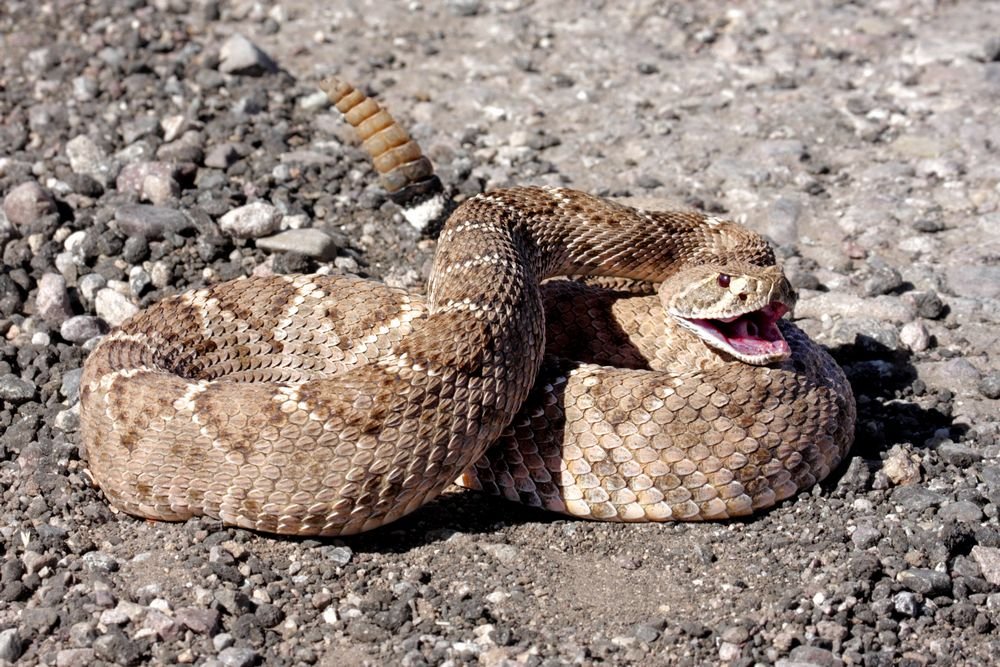
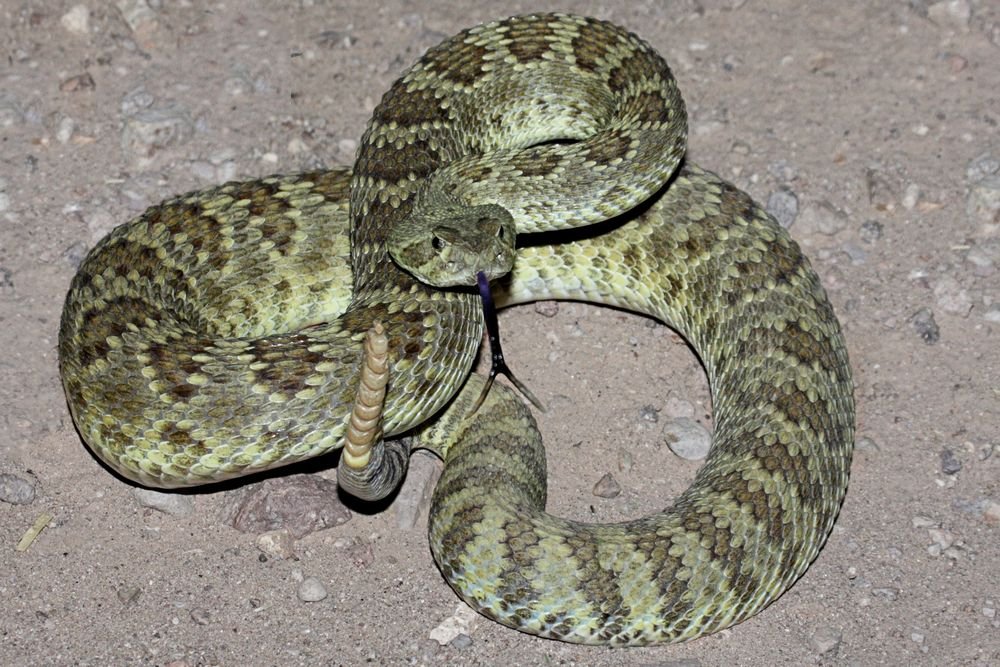
Leave a Reply